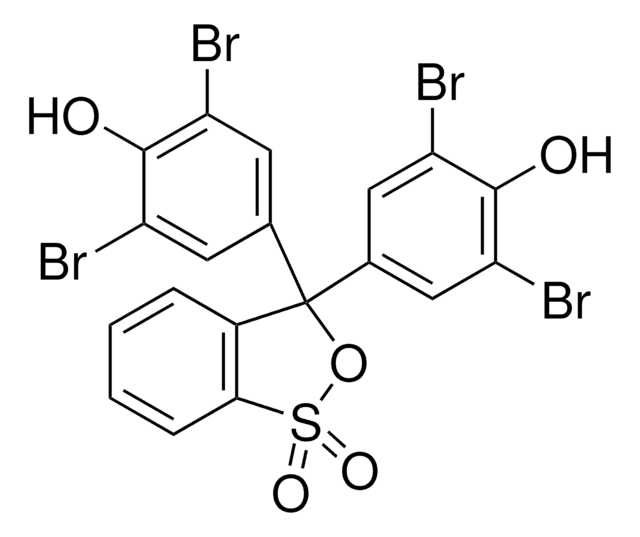32307
Blei(II)-acetat Trihydrat
puriss. p.a., ACS reagent, reag. ISO, reag. Ph. Eur., 99.5-102.0%
About This Item
Empfohlene Produkte
Qualität
ACS reagent
puriss. p.a.
Qualitätsniveau
Agentur
USP/NF
reag. ISO
reag. Ph. Eur.
Assay
99.5-102.0%
Form
solid
Verunreinigungen
≤0.005% insoluble in acetic acid
mp (Schmelzpunkt)
75 °C (dec.) (lit.)
Anionenspuren
chloride (Cl-): ≤5 mg/kg
nitrate (NO3-): ≤10 mg/kg
Kationenspuren
Ca: ≤50 mg/kg
Cd: ≤5 mg/kg
Cu: ≤5 mg/kg
Fe: ≤10 mg/kg
K: ≤50 mg/kg
Mg: ≤50 mg/kg
Na: ≤50 mg/kg
Zn: ≤5 mg/kg
SMILES String
O.O.O.CC(=O)O[PbH2]OC(C)=O
InChI
1S/2C2H4O2.3H2O.Pb/c2*1-2(3)4;;;;/h2*1H3,(H,3,4);3*1H2;/q;;;;;+2/p-2
InChIKey
MCEUZMYFCCOOQO-UHFFFAOYSA-L
Suchen Sie nach ähnlichen Produkten? Aufrufen Leitfaden zum Produktvergleich
Allgemeine Beschreibung
Anwendung
Signalwort
Danger
Gefahreneinstufungen
Aquatic Acute 1 - Aquatic Chronic 1 - Carc. 2 - Eye Dam. 1 - Lact. - Repr. 1A - STOT RE 1
Zielorgane
Central nervous system,Blood,Immune system,Kidney
Lagerklassenschlüssel
6.1C - Combustible acute toxic Cat.3 / toxic compounds or compounds which causing chronic effects
WGK
WGK 3
Flammpunkt (°F)
Not applicable
Flammpunkt (°C)
Not applicable
Analysenzertifikate (COA)
Suchen Sie nach Analysenzertifikate (COA), indem Sie die Lot-/Chargennummer des Produkts eingeben. Lot- und Chargennummern sind auf dem Produktetikett hinter den Wörtern ‘Lot’ oder ‘Batch’ (Lot oder Charge) zu finden.
Besitzen Sie dieses Produkt bereits?
In der Dokumentenbibliothek finden Sie die Dokumentation zu den Produkten, die Sie kürzlich erworben haben.
Kunden haben sich ebenfalls angesehen
Unser Team von Wissenschaftlern verfügt über Erfahrung in allen Forschungsbereichen einschließlich Life Science, Materialwissenschaften, chemischer Synthese, Chromatographie, Analytik und vielen mehr..
Setzen Sie sich mit dem technischen Dienst in Verbindung.











